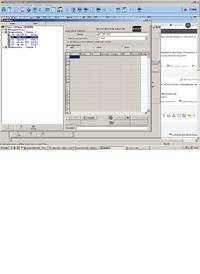I will write immediately that I am a layman in the subject of alarm installations.
We have an alarm system built by a supposedly professional installer. The problem appeared when one wireless detector started to fall - we had to replace the battery every 2 weeks, and the problem with it was causing the alarm system to activate. I was surprised that I can easily turn off this detector without triggering a tamper alarm ...
Another problem - when we had to remove the detector (room reconstruction) - due to the fact that the installer did not show up for more than 3 weeks - the detector was simply cut off.
Due to the fact that we also had to change the entry delay time at a specific detector - we installed dloadx. In the system, we only changed the time on these detectors, and removed the wireless detector and the 2 that was cut off.
After shutting down the system - it reloaded and ... old problems disappeared. But there was a tamper alarm on 6 other detectors. Only what I could say is that they are all on the same expander (only 1 detector on this expander does not indicate a problem).
I wonder what happened - we want to call another specialist, but I would like to know at least in general - whether the fault may lie, for example, in the installation itself (e.g. the detectors had previously disabled this tamper alarm).
Thank you in advance for your time and answers
We have an alarm system built by a supposedly professional installer. The problem appeared when one wireless detector started to fall - we had to replace the battery every 2 weeks, and the problem with it was causing the alarm system to activate. I was surprised that I can easily turn off this detector without triggering a tamper alarm ...
Another problem - when we had to remove the detector (room reconstruction) - due to the fact that the installer did not show up for more than 3 weeks - the detector was simply cut off.
Due to the fact that we also had to change the entry delay time at a specific detector - we installed dloadx. In the system, we only changed the time on these detectors, and removed the wireless detector and the 2 that was cut off.
After shutting down the system - it reloaded and ... old problems disappeared. But there was a tamper alarm on 6 other detectors. Only what I could say is that they are all on the same expander (only 1 detector on this expander does not indicate a problem).
I wonder what happened - we want to call another specialist, but I would like to know at least in general - whether the fault may lie, for example, in the installation itself (e.g. the detectors had previously disabled this tamper alarm).
Thank you in advance for your time and answers



